HANA data aging is a method to reduce the memory footprint of the HANA in-memory part without disturbing the end users. It is not reducing your database size.
Data aging as technique is still present, but has been superseded by the HANA NSE technique. See note 2799997 – FAQ: SAP HANA Native Storage Extension (NSE).
This blog will answer following questions:
- What is HANA data aging?
- How to switch HANA data aging on?
- How to set up HANA data aging for technical objects?
- What about data aging for functional objects?
What is HANA data aging?
HANA data aging is an application method to reduce the memory footprint based on application data logic. It is not a database feature but an application feature. The goal of HANA data aging is not to reduce the database size (which it is not doing), but to reduce the actual memory footprint of the HANA in-memory database.
Let’s take idocs as example: the idocs that are processed ok you need to keep in database for an agreed amount of time before business or audit allows you to delete them. Lets say you can only delete after 1 year. Every action on idocs now means that full year of idoc content is occupying main memory. For daily operational tasks you normally only need 2 months of data in memory and rest you can accept that it will take bit longer to read from disc into memory.
This is exactly what data aging is doing: you partition the data into application logic based chunks. In this case you can partition the idoc data per month and only have last 2 months in active memory. The other 10 months are on disc only. Reading data of last 2 months is still fast as usual. When having to report on the 10 months on disc, the system first needs to load from disc into memory; will be slower.
To reduce database itself, you would still need to do data archiving.
Advantage of the data aging is that the more expensive memory footprint costs can be reduced in such a way that the end users are not hampered. Data aging is transparent for them. With data archiving the users will always need to select different transaction and data files.
How to switch on data aging?
To switch on data aging on system level you need to do 2 things:
- Set the parameter abap/data_aging to on in RZ11
- In SFW5 switch on the switch called DAAG_DATA_AGING
This only enables the system for data aging.
Data aging switch on for technical object: example for application logging
With transaction DAGADM you can see the administration status of the data aging object. You first see red lights that the objects are not activated for data aging.

Per object you have extra transactions (which unfortunately differ per object…) to set the retention times. For application logging this is transaction SLGR. Here we choose in this example to data age all log after 180 days:

The advantage of this tailoring is that you could only age some of the objects if you want.
The transaction and OSS note for each of the objects can be found on this SAP blog.
Next step is to setup partitions for the object. To do this start transaction DAGPTM and open the object you want to partition:
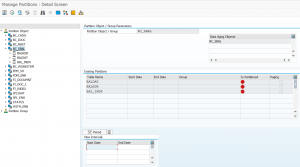
Initial screen is in display mode. Hit change button. On the bottom right side hit the Period button (Selection Time Period). In the popup enter the desired start date, time buckets (months, years) and amount of repetitions:
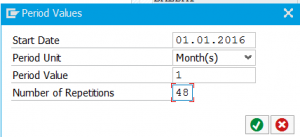
Now the partitions are defined. To execute the partitioning hit the execute button to start the partitioning in the background. Wait until the job finishes. Before running this on productive system check the runtime first on non-productive system with about same data size if possible.
After partitioning the screen should look like this:

Now we can activate the object in transaction DAGADM. Select the object and press the activate button. Popup appears to assign the object to existing data aging or new group:
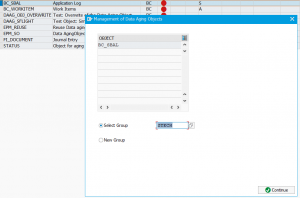
The data aging run will be done per group.
To start the actual data aging run start transaction DAGRUN.

Here you can schedule a new run with the Schedule new run button.
To see the achieved results of the data aging go to transaction DAGADM and select the object. Then push the button View current/Historical data.
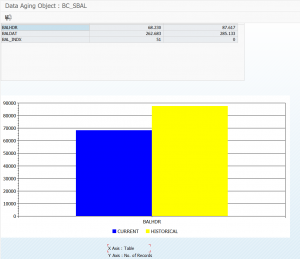
Functional data aging objects
Functional data archiving objects exist as well for Financial documents, sales orders, deliveries, etc. The full list and minimal application version can be found on this SAP blog.
Words of caution for functional archiving:
- The technical archiving objects are more mature in coding and usage. They are used in productive system and are with lesser bugs than the technical objects
- Before switching on a functional data aging object you need to prepare your custom ABAP code. If they are not adjusted properly to take the partitions with the date selections (or other application selection mechanism) into account all benefits are immediately lost. A Z program that reads constantly into full history will force a continuous read of historical partitions….
Background information
More background information can be found in OSS notes 2416490 – FAQ: SAP HANA Data Aging in SAP S/4HANA and 2869647 – Guidance for use of Data Aging in SAP S/4HANA.
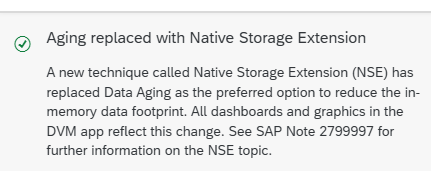
Really useful and explained very well.
Thanks for the content.
Thanks!